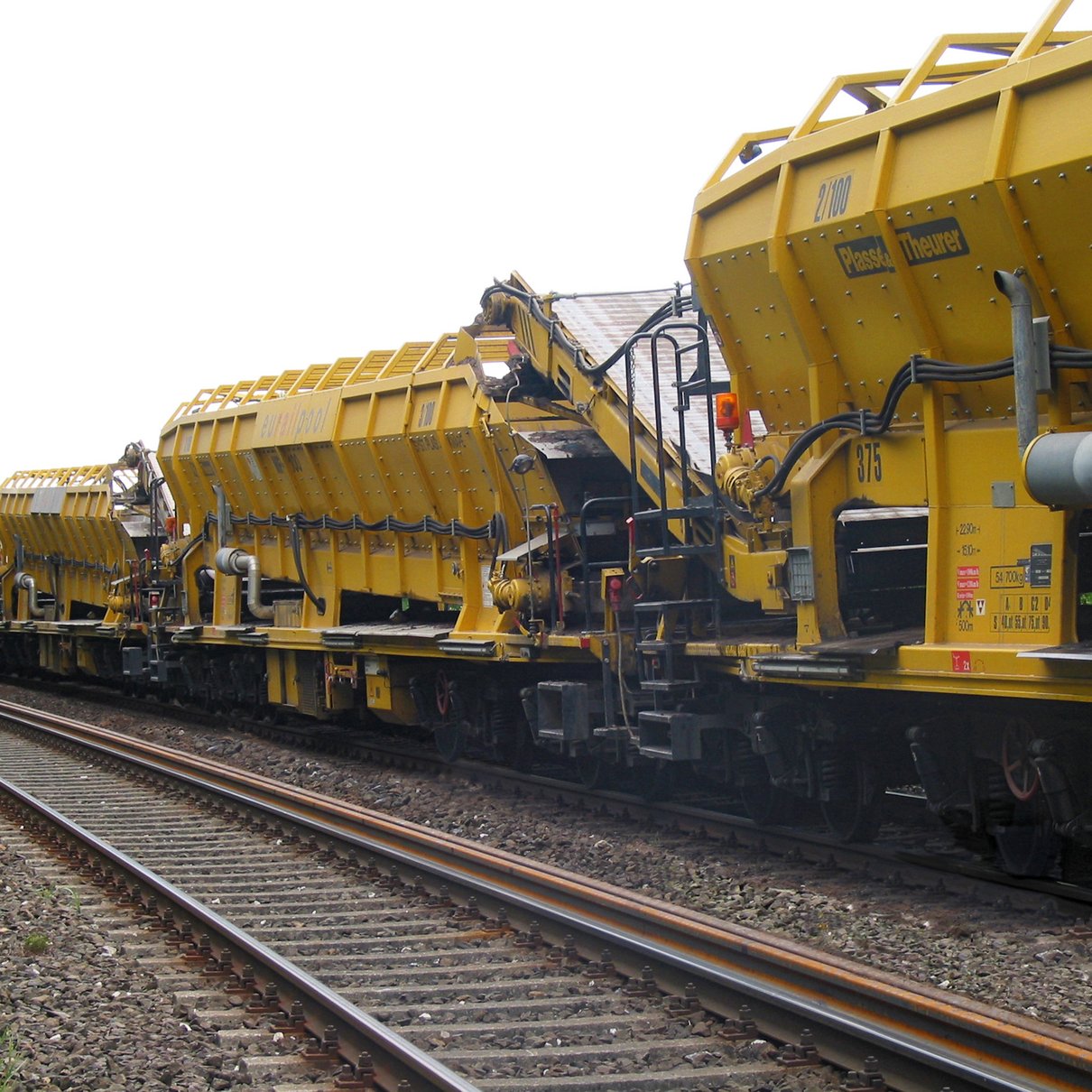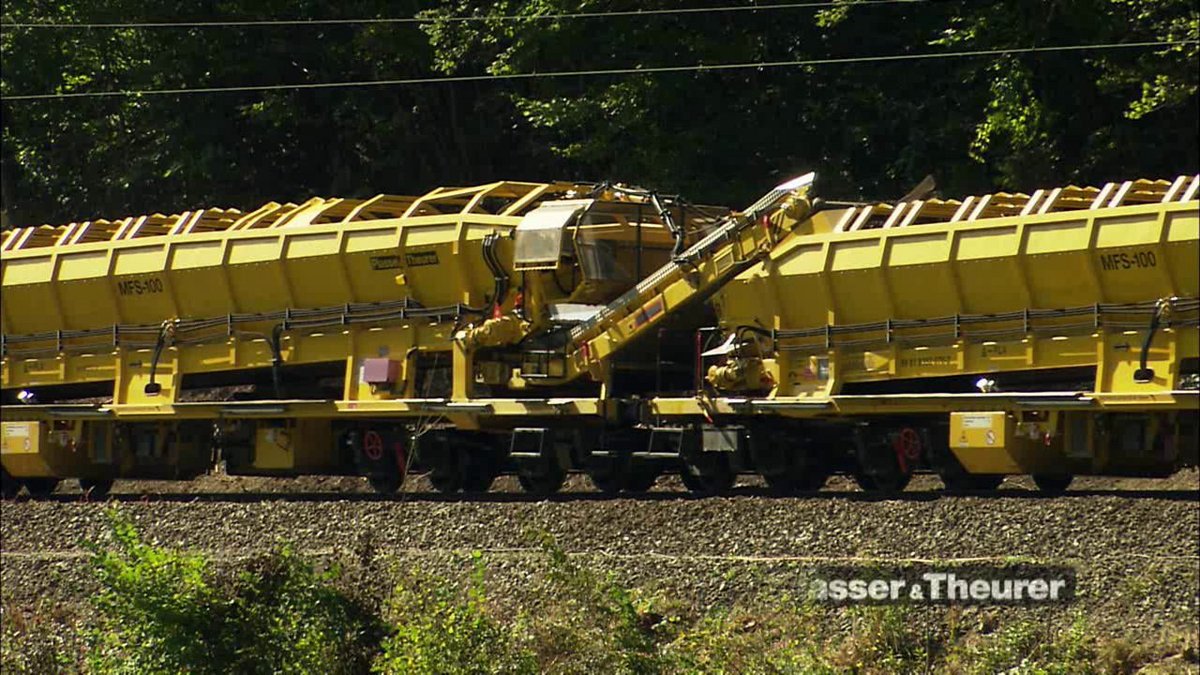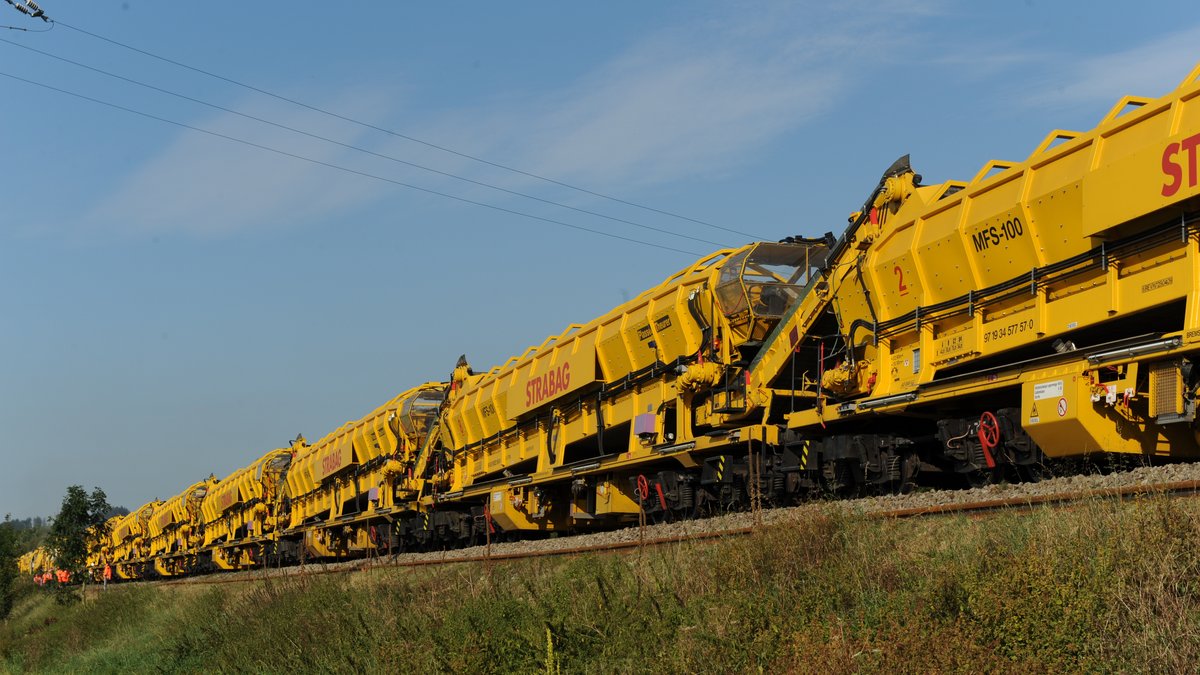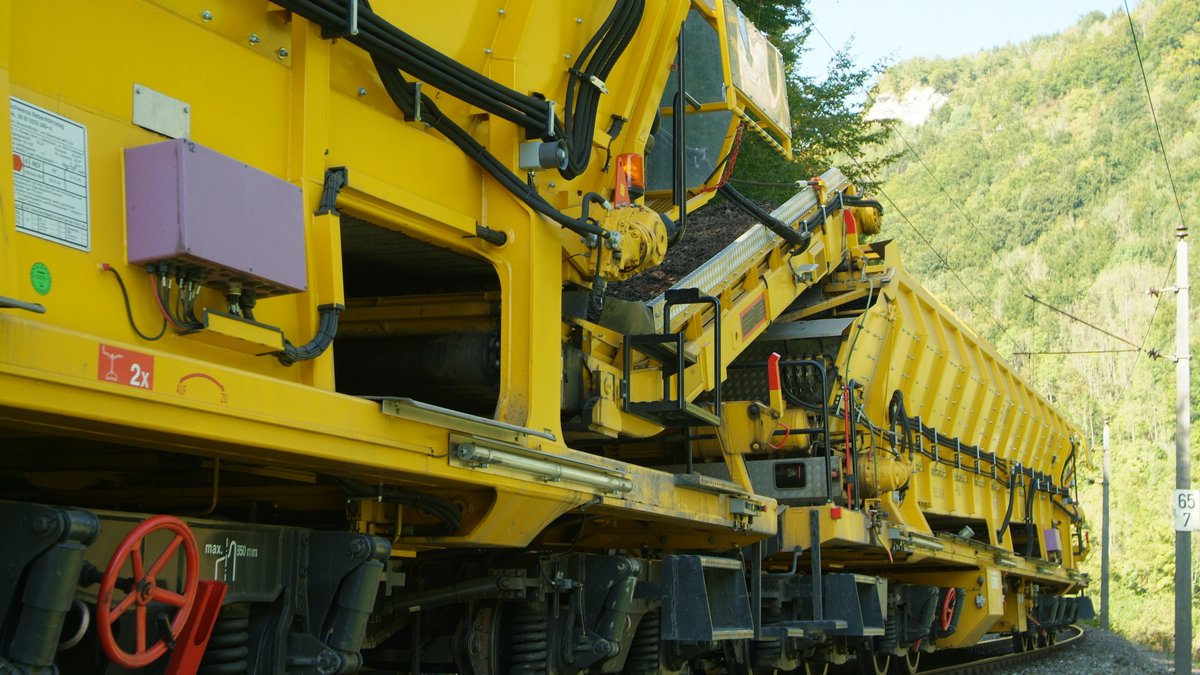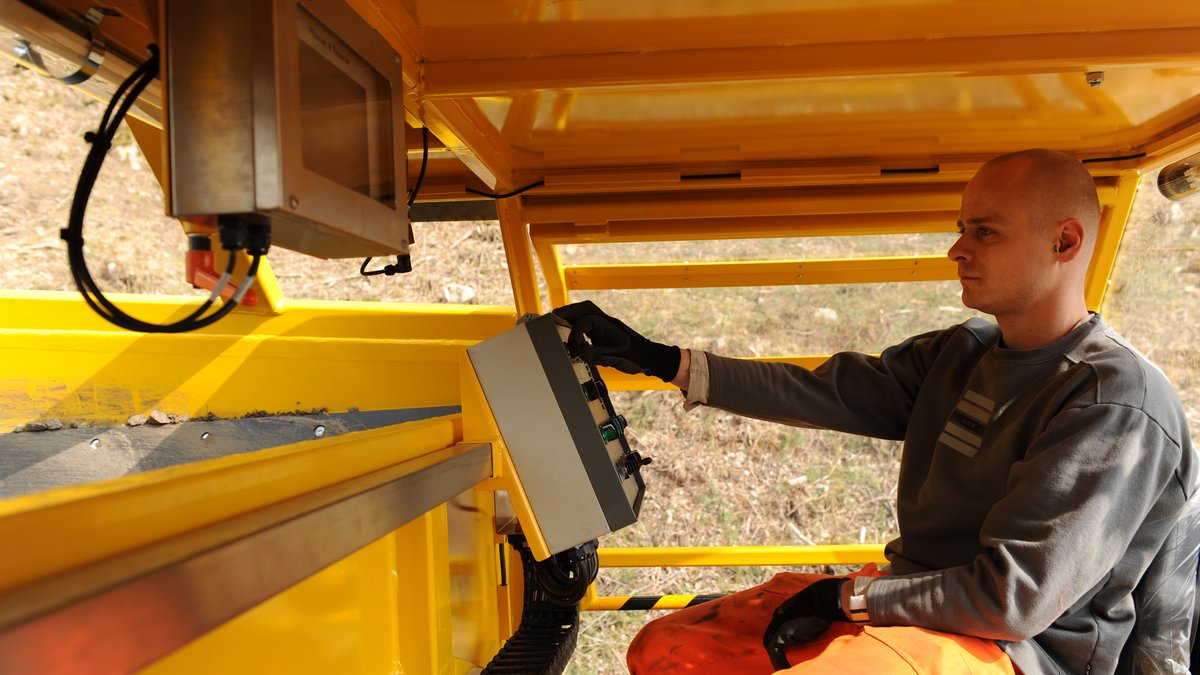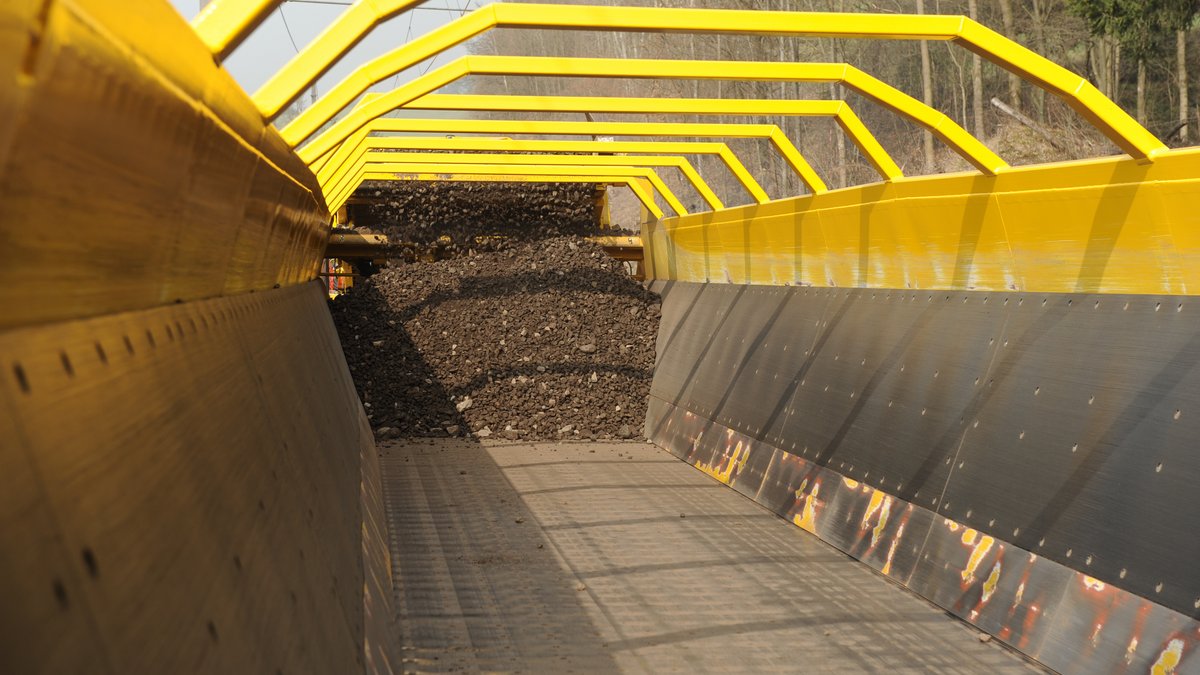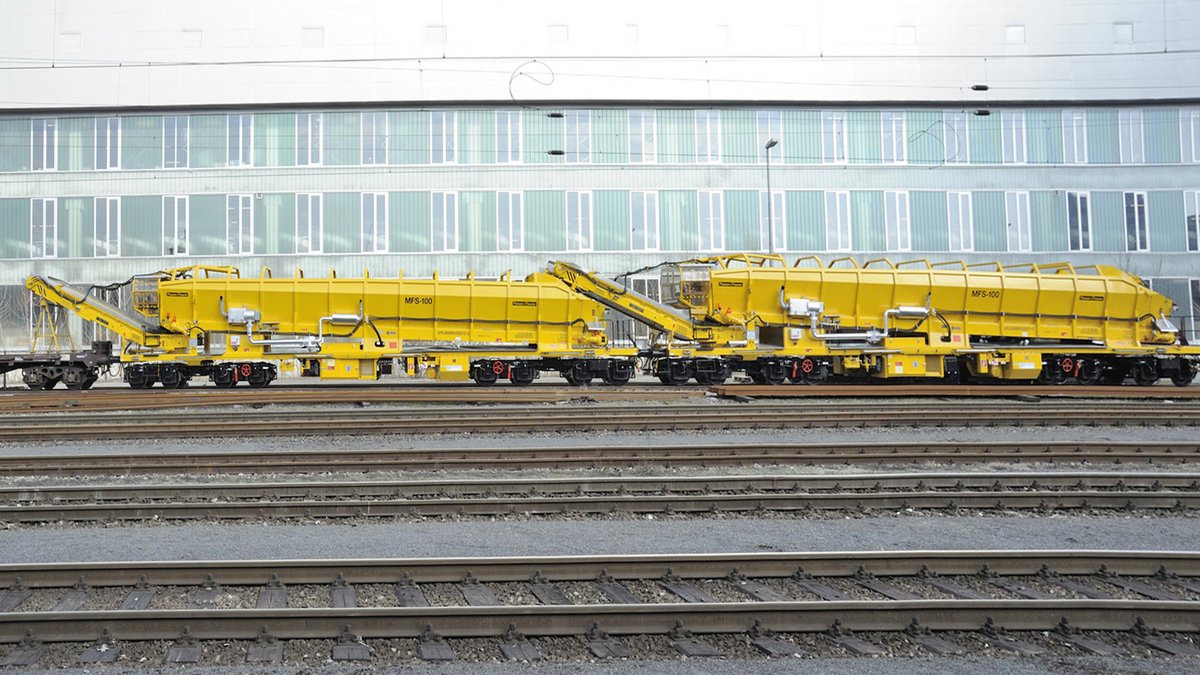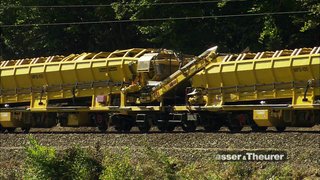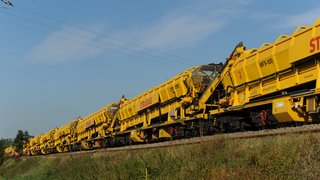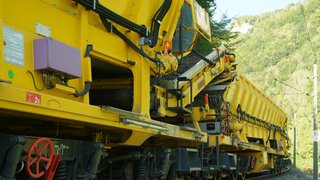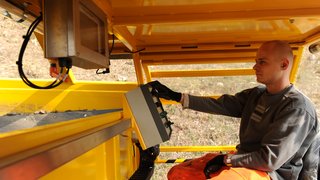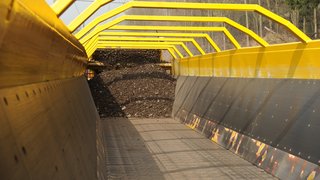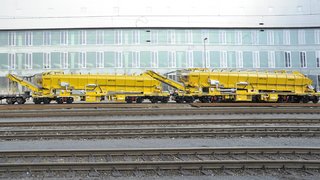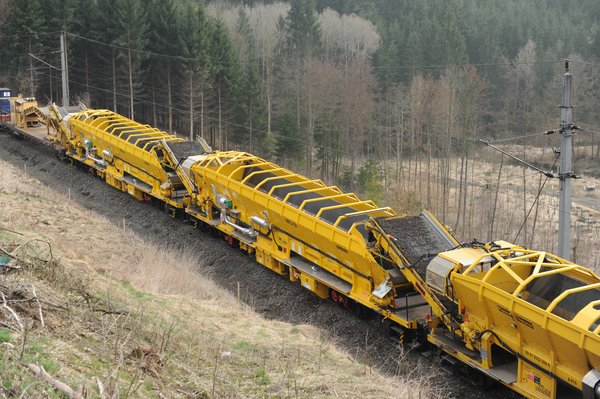- Infrastructure
- Conventional lines
- Heavy haul
- High speed
- Field of application
- Track
- Switch
- Working mode
- Continuous action
Highlights
- MFS100-series allows fully mechanized loading, conveying, storing and discharging
- Side slewing unloading conveyor belt (MFS100) enables a fast self-discharging process into flat cars on adjacent track or to the side
- Additional transfer conveyor belt and ballast distributing devices (MFS100 S) allows an exact dosage of the ballast into the track or onto the ballast shoulder
- Independent energy supply of each MFS unit guarantees high flexibility
MFS units are open-sided wagons in standard railway vehicle design with a floor conveyor belt in the hopper and a transfer conveyor belt at the front end of the unit.
The floor conveyor belt enables continuous filling of the hopper or passing on the material. The transfer conveyor belt discharges the loose material into the next hopper or to the side at a suitable location. The belt can be slewed 45° to the left or to the right hand side, tilt warning and tilt protection prevents the vehicle from tipping during discharging. A protected workplace with control and monitoring instruments for the conveyor belts is standard design. The MFS units can be put together in any given number to form a material train. MFS units with rigid transfer conveyor belt are used in formation as part of the conveyor line and/or as hoppers. Unloading is performed by an MFS unit in the formation with slewing conveyor belt.
The hoppers are suitable for all kinds of loose material. All conveyor belts are powered hydraulically. A diesel engine supplies the power.
The work principle of the MFS material conveyor and hopper units
MFS units are open-sided wagons in standard railway vehicle design with a floor conveyor belt in the hopper and a transfer conveyor belt at the front end of the unit.
The floor conveyor belt enables continuous filling of the hopper or passing on the material. The transfer conveyor belt discharges the loose material into the next hopper or to the side at a suitable location. The belt can be slewed 45° to the left or to the right hand side, tilt warning and tilt protection prevents the vehicle from tipping during discharging. A protected workplace with control and monitoring instruments for the conveyor belts is standard design. The MFS units can be put together in any given number to form a material train. MFS units with rigid transfer conveyor belt are used in formation as part of the conveyor line and/or as hoppers. Unloading is performed by an MFS unit in the formation with slewing conveyor belt.
The hoppers are suitable for all kinds of loose material. All conveyor belts are powered hydraulically. A diesel engine supplies the power.
Demands on a material handling system
- Loading, conveying, storing and unloading processes automated for the most part
- Easy adaptation to the prevailing worksite and operating conditions
- No detriment to the working output of the ballast cleaning machine
- Simple operation with minimum number of staff
- Independent power supply
- Positioning solely in the track under construction
- Resulting savings in the worksite management
The MFS material conveyor and hopper units from Plasser fulfill exactly these requirements ideally. They are conveyor lines, hoppers and self-discharging units in one.
The flexible basic concept of these machines enables a constructional adaptation to the most varied operating conditions, both for spoil loading and for the supply of new material.
Technical data MFS100 / MFS 100 S
| Length | 75' 2" | |
| Width | 10' 2" | |
| Height | 13' 2" | |
| Weight MFS100 | 119 000 | lb |
| Weight MFS100 S | 125 500 | lb |
| Distance betw. Bogie Pivots | 46' 3" | |
| Distance Track Axis to Middle of the fully slewed out Unloading Coveyor Belt | 15' 5" | |
| Conveying Output | 800 | m³/h |
| Unloading Time | 5 | min |
| Travel Speed | 75 | mph |
